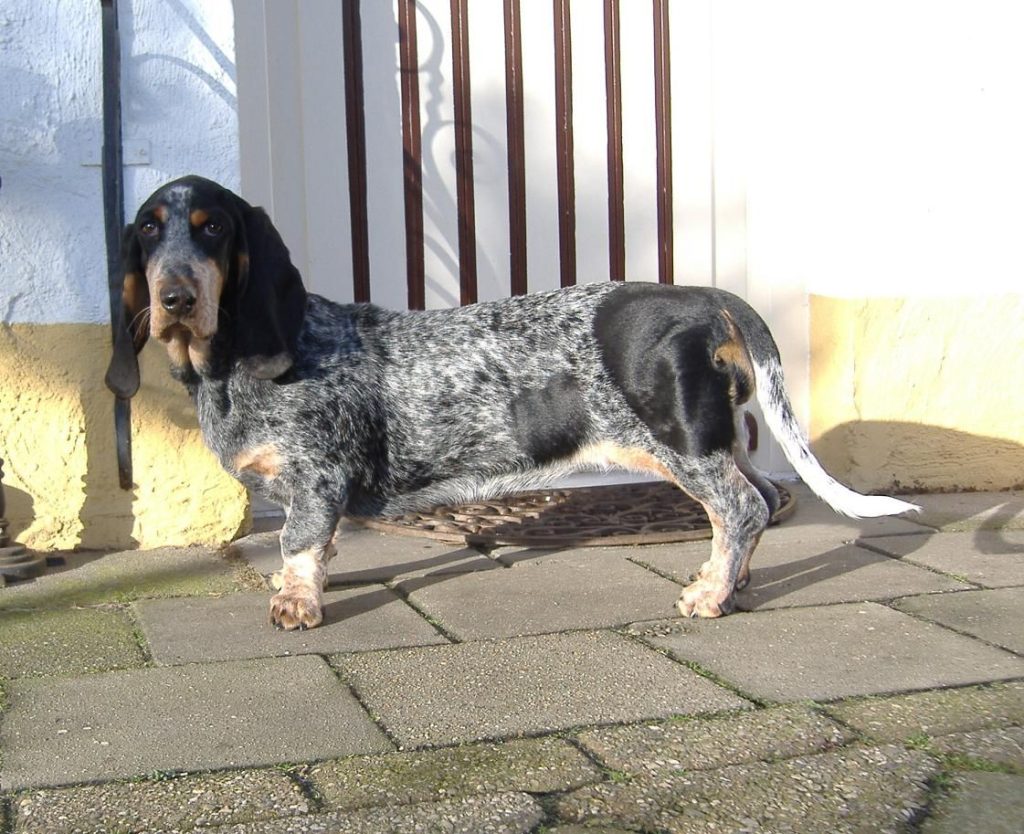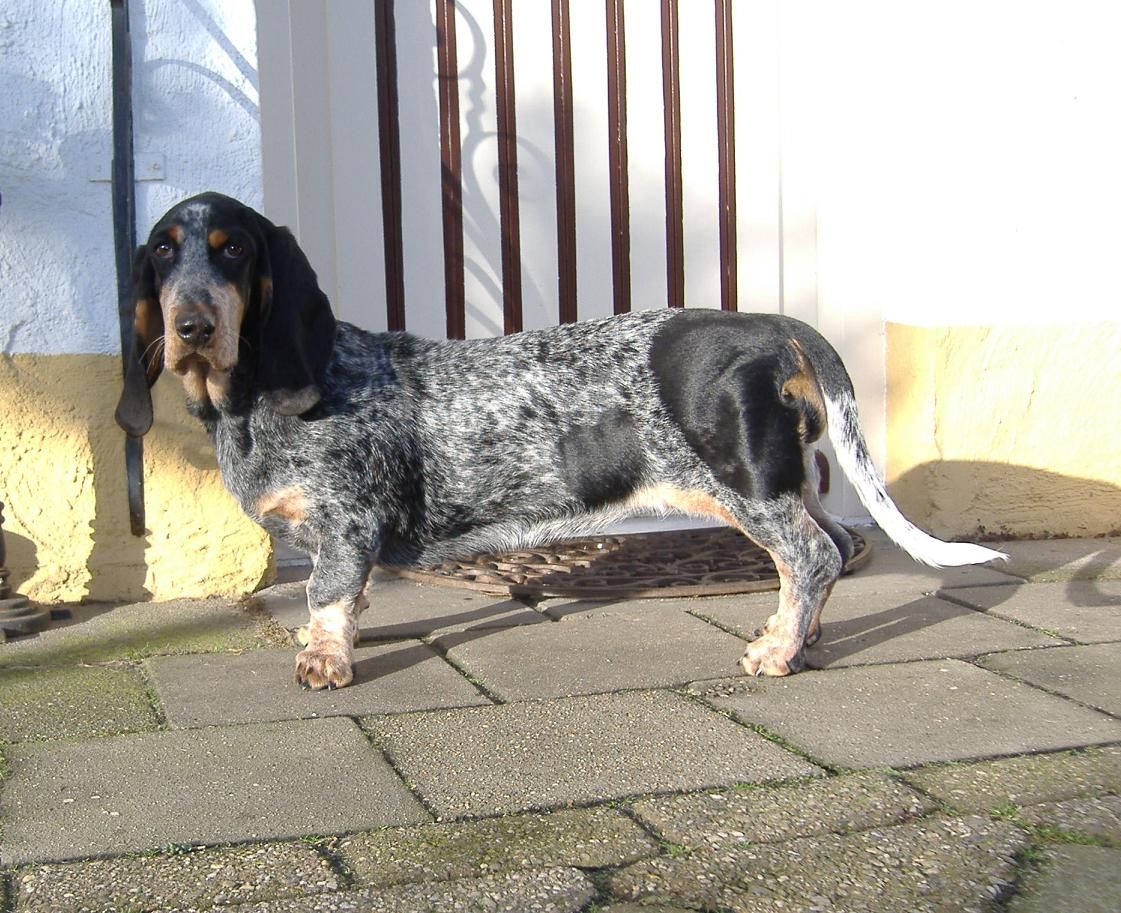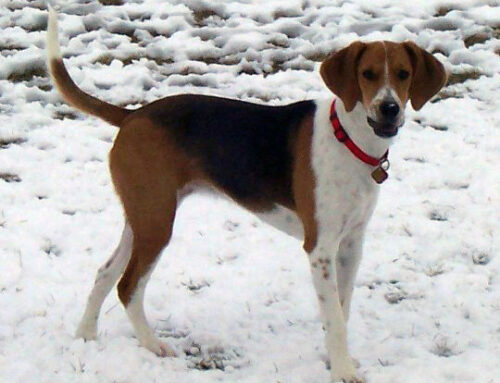Are you considering getting a Basset Bleu de Gascogne as your next furry companion? This breed is known for being loyal, friendly, and affectionate. Their distinctive appearance, with their long ears and soulful eyes, makes them stand out in a crowd. Basset Bleu de Gascognes are also great with children and other pets, making them a perfect addition to any family. However, before making a decision, it’s important to learn more about this breed’s temperament, exercise needs, and potential health issues. In this article, we will provide you with all the information you need to make an informed decision about whether a Basset Bleu de Gascogne is the right dog for you.
Breed Category: Hound
Country of Origin: France
Average Size:34-42 cm
Average Weight:16-18 kg
Average Life Span: 10-14 years
Grooming Requirements: Moderate
Exercise Requirements:Moderate to high
History and Origin
The Basset Bleu de Gascogne is a breed of dog that originated in the Gascony region of France. This breed is known for its distinctive blue and white coat, long ears, and short legs. The Basset Bleu de Gascogne is a scent hound that was originally bred for hunting small game such as rabbits and hares.
The history of the Basset Bleu de Gascogne can be traced back to the 14th century. The breed was developed by crossing the Grand Bleu de Gascogne with the Basset Saintongeois. The Grand Bleu de Gascogne is a larger breed of dog that was used for hunting larger game such as deer and wild boar. The Basset Saintongeois is a smaller breed of dog that was used for hunting small game. The result of this crossbreeding was a dog that had the scenting ability of the Grand Bleu de Gascogne and the size and agility of the Basset Saintongeois.
The Basset Bleu de Gascogne was primarily used for hunting in the Gascony region of France. The breed was particularly popular among the nobility and was often used for hunting parties. The Basset Bleu de Gascogne was also used for hunting in other parts of France and was eventually introduced to other countries such as the United Kingdom.
In the early 20th century, the Basset Bleu de Gascogne faced a decline in popularity due to the rise of other breeds of hunting dogs. However, the breed was saved from extinction by a group of dedicated breeders who worked to preserve the breed. Today, the Basset Bleu de Gascogne is still primarily used for hunting, but it is also kept as a companion dog.
The Basset Bleu de Gascogne is a medium-sized dog that typically weighs between 35 and 40 pounds. The breed has a short, dense coat that is blue and white in color. The Basset Bleu de Gascogne has long, droopy ears that are set low on its head. The breed is known for its friendly and affectionate nature, and it is generally good with children and other pets.
In conclusion, the Basset Bleu de Gascogne is a breed of dog that has a long and rich history.

Size and Breed Category
The Basset Bleu de Gascogne is a medium-sized breed of dog that originated in France. They are known for their distinctive blue and white coat, which is short and dense. The breed typically weighs between 16-18 kg and stands at a height of 30-38 cm at the shoulder. They have long, droopy ears and a wrinkled forehead, giving them a sad expression. The Basset Bleu de Gascogne is classified as a hound, specifically a scent hound, and is known for their excellent sense of smell. They were originally bred for hunting small game, such as rabbits and hares, and are still used for this purpose today.
The Basset Bleu de Gascogne is a member of the basset family, which includes other breeds such as the Basset Hound and the Bloodhound. They are a friendly and affectionate breed, known for their loyalty to their owners. However, they can also be stubborn and independent, which can make training a challenge. They are generally good with children and other pets, but their hunting instincts may cause them to chase smaller animals. The Basset Bleu de Gascogne is a relatively rare breed, with only a small number of puppies being registered each year. They require regular exercise and mental stimulation to keep them happy and healthy.
Fur Length and Colour
The fur of this breed is short and dense, with a glossy appearance. The hair is fine and lies close to the skin, providing a smooth texture to the touch. The fur is predominantly blue, with black patches and tan markings on the face, legs, and chest. The blue coloration can range from a light grey-blue to a deep navy blue, and the black patches can vary in size and shape. The tan markings are typically found above the eyes, on the cheeks, and on the legs. Overall, the fur of the Basset Bleu de Gascogne is a striking combination of colors that gives the breed a distinctive appearance.
The length of the fur on this breed is relatively short, with no long or shaggy hair. This makes the Basset Bleu de Gascogne a low-maintenance breed when it comes to grooming. However, regular brushing is still recommended to keep the coat healthy and shiny. The fur is also weather-resistant, which makes it suitable for outdoor activities in various climates. The blue coloration of the fur is a result of a dilution gene, which is unique to this breed. This gene also affects the color of the eyes, which are typically a light hazel or amber color. Overall, the fur of the Basset Bleu de Gascogne is an important characteristic of the breed, contributing to its distinctive appearance and practicality.
Termperament and Trainability
Basset Bleu de Gascogne is a breed of dog that is known for its friendly and affectionate temperament. They are highly sociable and love to be around people, making them great family pets. They are also known for their loyalty and devotion to their owners, which makes them excellent watchdogs. However, they can be quite stubborn at times, which can make training a bit challenging. Nevertheless, with patience and consistency, they can be trained to obey commands and perform various tasks.
When it comes to trainability, Basset Bleu de Gascogne is a breed that requires a firm and consistent approach. They are intelligent dogs, but they can be easily distracted by their strong sense of smell. Therefore, it is important to use positive reinforcement techniques and keep training sessions short and engaging. They respond well to treats and praise, and they enjoy learning new things. However, they can become bored easily, so it is important to keep training sessions varied and interesting. With the right approach, Basset Bleu de Gascogne can be trained to be well-behaved and obedient dogs.

Known Health Conditions
Basset Bleu de Gascogne is a breed of dog that is prone to certain health conditions. One of the most common health issues that affect this breed is hip dysplasia. This condition occurs when the hip joint does not develop properly, leading to pain and discomfort. Basset Bleu de Gascogne may also suffer from ear infections due to their long, floppy ears that can trap moisture and bacteria. Additionally, this breed is susceptible to obesity, which can lead to a range of health problems such as diabetes, heart disease, and joint issues.
Another health condition that Basset Bleu de Gascogne may experience is bloat. This is a serious condition that occurs when the stomach fills with gas and twists on itself, cutting off blood supply to the organs. Bloat can be life-threatening and requires immediate veterinary attention. This breed may also be prone to skin allergies, which can cause itching, redness, and hair loss. Finally, Basset Bleu de Gascogne may develop eye problems such as cataracts or glaucoma, which can lead to vision loss if left untreated.

Openness to Strangers
Basset Bleu de Gascogne is a breed of dog that is known for its friendly and welcoming nature towards strangers. They are a medium-sized breed that can weigh up to 25 kilograms and stand up to 42 centimeters tall at the shoulder. This breed is known for its sociable and outgoing personality, making them a popular choice for families and individuals who enjoy spending time with their pets. They are always eager to meet new people and make new friends, and they are known for their ability to adapt quickly to new environments and situations. Whether they are meeting new people at the park or welcoming guests into their home, Basset Bleu de Gascogne is always happy to make new friends.
One of the most notable characteristics of Basset Bleu de Gascogne is their open and friendly nature towards strangers. They are a breed that is known for their sociable and outgoing personality, and they are always eager to meet new people. This breed is particularly well-suited to families with children, as they are patient and gentle with young ones. They are also known for their loyalty and devotion to their owners, and they will often go out of their way to make sure that their family is happy and well-cared for. Whether they are playing with children or cuddling up with their owners on the couch, Basset Bleu de Gascogne is always happy to be surrounded by the people they love.
Playfulness Level
The Basset Bleu de Gascogne is a highly playful breed of dog that loves to engage in various activities. They are known for their energetic and lively nature, which makes them a great companion for families with children. These dogs have a high playfulness level and enjoy playing games such as fetch, tug of war, and hide and seek. They are also known to be excellent swimmers and enjoy spending time in the water.
In addition to their love for physical activities, the Basset Bleu de Gascogne also has a playful personality that makes them a joy to be around. They are known for their sense of humor and love to make their owners laugh. These dogs are also highly social and enjoy spending time with other dogs and people. They have a friendly and outgoing nature that makes them a great addition to any household. Overall, the Basset Bleu de Gascogne is a highly playful breed that brings a lot of joy and entertainment to their owners.
Suitability as a Pet for Children
Basset Bleu de Gascogne is a friendly and affectionate breed that can make a great pet for children. They are known for their gentle nature and love to be around people. With their calm and patient temperament, they can be a good companion for kids who are learning to interact with dogs. They are also intelligent and easy to train, which can make them a good fit for families who are looking for a trainable pet. However, like all dogs, they require regular exercise and socialization to stay healthy and happy.
Exercise Needs
Basset Bleu de Gascogne is a breed of dog that requires a moderate amount of exercise to maintain their physical and mental health. They are a highly energetic breed that loves to run and play, making them an excellent choice for active families. A daily walk of at least 30 minutes is recommended to keep them fit and healthy. Additionally, they enjoy playing games such as fetch and tug-of-war, which can provide them with the necessary exercise they need. It is important to note that they are prone to obesity, so it is essential to monitor their diet and exercise routine to prevent weight gain.
In addition to physical exercise, Basset Bleu de Gascogne also requires mental stimulation to prevent boredom and destructive behavior. They are intelligent dogs that enjoy learning new tricks and commands, making them an excellent candidate for obedience training. Puzzle toys and interactive games can also provide them with the mental stimulation they need. It is important to note that they are a pack animal and thrive on social interaction, so it is essential to spend time with them and provide them with plenty of attention. Overall, Basset Bleu de Gascogne is an active and intelligent breed that requires a balanced exercise routine to maintain their physical and mental well-being.

Suitability for a Multi-Pet Family
Basset Bleu de Gascogne is a dog breed that has a friendly nature towards other pets. They are known to be sociable and enjoy the company of other animals. This breed is not aggressive towards other pets and can get along well with them if introduced properly. They have a playful nature and enjoy interacting with other animals. Basset Bleu de Gascogne can be a great addition to a household with other pets.
Housing Requirements
Basset Bleu de Gascogne is a breed that requires a spacious and comfortable living environment. They are active dogs that need plenty of room to move around and play. A house with a large backyard or a farm with open fields would be ideal for this breed. They also require a warm and dry shelter to protect them from harsh weather conditions. A kennel or a doghouse with enough space for them to stretch out and relax is necessary. Additionally, they need a comfortable bed to rest on and a clean and hygienic living space to maintain their health and well-being.
Basset Bleu de Gascogne is a breed that requires regular exercise and mental stimulation. They need daily walks and playtime to keep them physically and mentally fit. A fenced yard or a secure area where they can run and play off-leash is also essential. They are social dogs that enjoy the company of their owners and other dogs. Therefore, they need plenty of opportunities to interact with people and other pets. A well-trained and socialized Basset Bleu de Gascogne can make an excellent family pet and a loyal companion for life.

Summary
The Basset Bleu de Gascogne can make a great pet for those who are willing to provide them with the necessary care and attention. They require regular exercise and mental stimulation to keep them happy and healthy. Additionally, they are known for their loyalty and affection towards their owners, making them a great companion for families or individuals who are looking for a loving and devoted pet. However, potential owners should be aware of their strong hunting instincts and may need to take extra precautions when introducing them to other small animals.
Basset Bleu de Gascogne Dog FAQS
Basset Bleu de Gascognes can be stubborn and difficult to train, but with patience and consistency, they can learn basic commands.
Yes, Basset Bleu de Gascognes are known to be good with children and make great family pets.
Basset Bleu de Gascognes are generally healthy, but they can be prone to ear infections and obesity.
Yes, Basset Bleu de Gascognes do shed quite a bit and require regular grooming.
Basset Bleu de Gascognes usually live for around 10-12 years.
Basset Bleu de Gascognes need at least 1 hour of exercise per day to stay healthy and happy.
It is recommended to take your Basset Bleu de Gascogne to the vet for a check-up at least once a year.
Basset Bleu de Gascognes usually grow to be around 34-42 cm tall.
The average weight of a Basset Bleu de Gascogne is between 16-18 kg.
Basset Bleu de Gascognes should be fed a high-quality, balanced diet that is appropriate for their age and activity level.






Leave A Comment